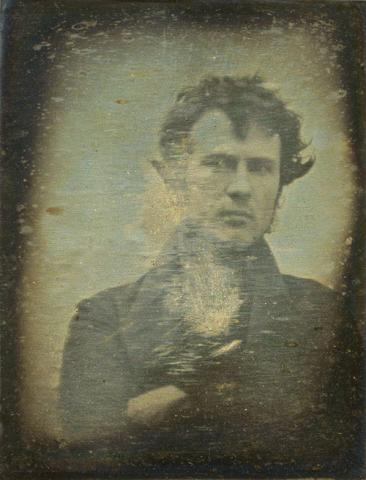Diving Deep Into Photo History
Philadelphia can lay claim as the national birthplace of photography.
Michelle Smiley ’12, M.A. ’15, received a fellowship from the Consortium for the History of Science, Technology, and Medicine to work on her dissertation on the history of U.S. photography with a focus on the impact of technology.
Over the past 25 years, art historians have been rewriting the early history of photography. Now, instead of reading only of Louis Daguerre’s eponymous invention in 1839—the daguerreotype—one encounters a number of contemporaneous stories about inventors, artists, and chemists working on a range of techniques for capturing and fixing images.
For my dissertation research, I have been diving into archives to learn about a number of important Philadelphians whose experiments and discoveries had a direct impact on how photography developed before and after Daguerre.
In the early 19th century, Philadelphia offered the best scientific training in the country. At the time, chemistry was not yet its own discipline. Instead, that work was being done in medical colleges, and Philadelphia, which boasted the first medical college in the country, was home to a thriving community of chemists and instrument makers.
And in the years just before and after the announcement of Daguerre’s invention, those Philadelphians—chemists and scientists and instrument makers and inventors—had precisely the kind of technical knowledge needed to improve on the daguerreotype process.
One such inventor worked at the U.S. Mint and made use of materials readily at hand there to try out Daguerre’s method soon after it was made public. On September 25, 1839, Joseph Saxton coated a coin blank in silver nitrate to make an image of Philadelphia Central High School, now the earliest-surviving photograph made in the U.S. Later that same year, Paul Beck Goddard, a medical doctor and chemist, discovered that bromide could dramatically accelerate the photographic process. Around the same time, a local metallurgist, Robert Cornelius, stood before his camera and made what is considered the world’s first daguerreotype self-portrait (right).
Figures like Saxton, Goddard, and Cornelius made Philadelphia a center for photographic development. Also contributing to the city’s importance in the refinement of the medium was the collaborative spirit that characterized the community. For example, both Saxton and Goddard consulted with Cornelius, an expert in metallurgy and employee at his father’s Philadelphia metal works factory, to better understand how to produce smoothly polished daguerreotype plates. While similar discoveries and improvements on the photographic process were occurring simultaneously across the globe, many of these ideas did not circulate beyond their local communities until many years later.
By speeding up exposure times and improving image quality, American innovations opened new commercial opportunities for the medium. In Philadelphia, a burgeoning middle class that wanted portraits created a market for daguerreotypy, and a number of entrepreneurs from the city’s rising merchant class responded in force. And indeed, in the winter of 1840, Robert Cornelius, with Goddard as his silent partner, opened the world’s first photographic studio in Philadelphia.
Published on: 09/16/2017
